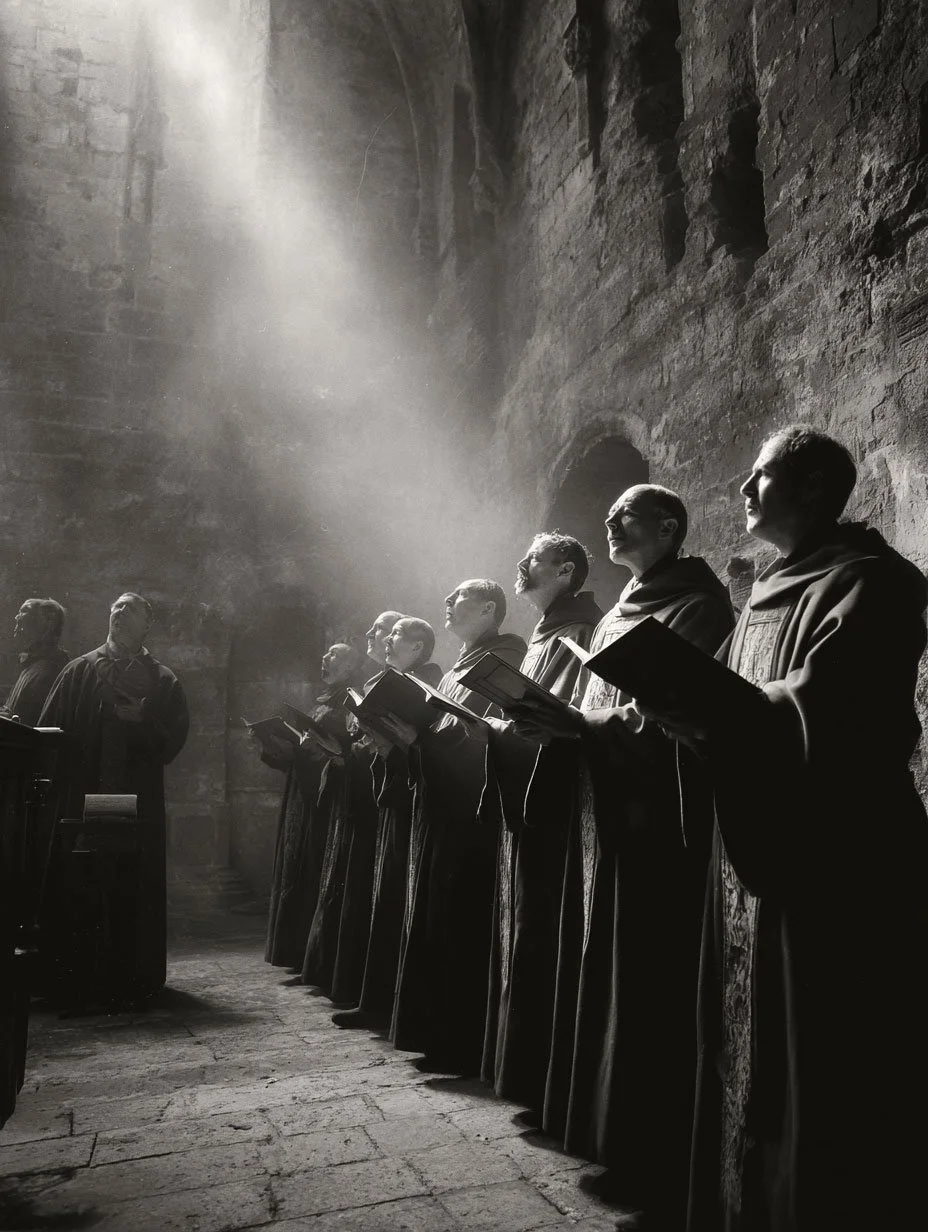Gregorian Chant:
The Sacred Syllable in Western Christianity
Gregorian chant is the supreme expression of the sacred syllable in Western Christianity. For over 1,200 years, this ancient monophonic sacred music has been the official liturgical chant of the Roman Catholic Church.
Performed entirely a cappella, it features flowing, non-metrical rhythm and profound melismatic melodies that stretch a single Latin syllable across dozens of notes.
Often called “prayer set to music,” Gregorian chant transforms every syllable of Scripture into a gateway to divine contemplation – the purest Western embodiment of the sacred syllable.
Historical Roots and Development
Gregorian chant emerged from the early medieval fusion of Old Roman and Gallican traditions. It reached its classical form during the Carolingian Renaissance (8th–10th centuries) and is traditionally attributed to Pope St. Gregory the Great.
Built on the eight church modes, its melodies float outside modern major-minor tonality, creating an ethereal atmosphere perfect for meditation.
The vast repertoire includes the Mass Proper (Introit, Gradual, Alleluia, Offertory, Communion) and the eight daily hours of the Divine Office.
Iconic masterpieces include Dies Irae, Salve Regina, Te Deum, and Veni Creator Spiritus.
In the 19th century, the Benedictine monks of Solesmes Abbey restored the tradition, and their authentic Solesmes method remains the global standard for performance.
A Western Mantra Tradition
In today’s noisy world, Gregorian chant offers a powerful mantric practice that parallels Eastern use of the sacred syllable.
It closely mirrors the Byzantine Jesus Prayer and the prolonged chanting of sacred mantras in Hinduism and Buddhism.
Its gentle melismas and modal purity quiet the mind and open the heart to the Eternal Word vibrating within sound itself.
Experience the living tradition → Gregorian Chants by the Monks of Santo Domingo de Silos:

